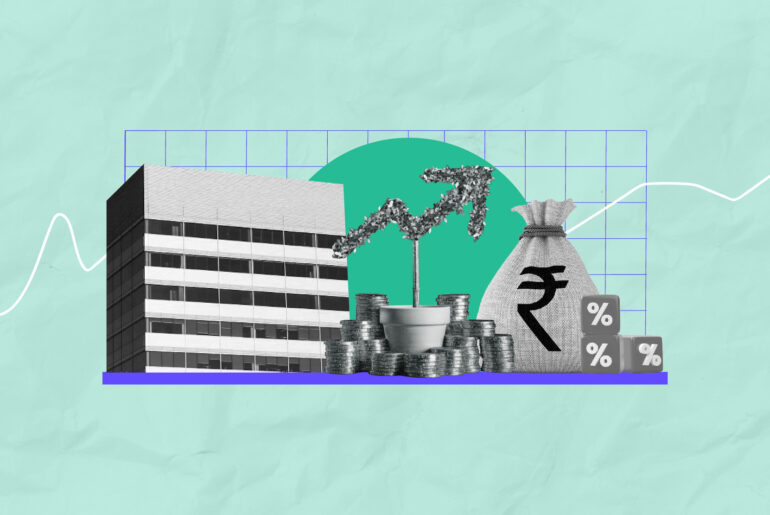Last Updated on May 24, 2022 by Anjali Chourasiya
EPFO stands for Employee Provident Fund Organisation and it is one of the world’s largest social security organizations. As per the annual report of 2016-2017, EPFO maintains over 19.3 cr. active accounts. EPFO manages the Employees’ Provident Fund, which is a retirement benefits scheme. Crores of the working class have benefitted from this scheme that has not only provided for post-retirement benefits, but also for emergencies.
Let’s find out what is EPF, its tax, interest benefits, so on and so forth.
Table of Contents
What is EPF?
The Employee Provident Fund (EPF) is a retirement benefits scheme in which an employee contributes a specific percentage of his basic pay each month. The employer also contributes such an amount towards this scheme monthly. The fundamental objective is to fund the employee’s retirement as the amounts contributed over a long period can help create a huge corpus.
It is important to note that every organization with more than 20 employees have to register themselves with the EPFO under the EPF Act. Each employee and the employer will have to then contribute 12% of basic pay towards EPF monthly.
While it is true that the employer also has to contribute 12% each month, it is incorrect to assume that the entire 12% goes towards the EPF. Only 3.67% of this 12% goes towards employee’s EPF, the remaining 8.33% is deposited into the Employee’s Pension Scheme (EPS). The employee can withdraw these funds at the time of retirement and under some specific conditions before his retirement.
The employee can make contributions to EPF at a higher rate, but the employer is not obligated to do so. Under EPS, the employee is not liable to contribute once the employee attains the age of 58 and is still working.
What is EPFO?
The Employee Provident Fund and Miscellaneous Provision Act, 1952 led to the creation of the Employees’ Provident Fund Organization that provides social security to employees across India. It comes under the control of the Ministry of Labour and Employment, and there are three major schemes under it:
EPFO Scheme 1952: Under this, the whole amount and interest on it are given on the death and retirement of an employee. Employees can withdraw such amounts early on too, for education, marriage, housing, and any medical emergencies.
Pension Scheme 1995: Some of the features of this include monthly benefits for superannuation, disability, widower, and children.
Insurance Scheme 1976: Under this, the benefit is provided in case the employee has expired and if the employee was a member of this scheme. This scheme gives benefits up to Rs. 6,00,000.
EPF interest rate for FY 2021-2022
The EPF interest rates are reviewed each year, and for the FY 2021-2022, the rate is 8.5%. This means the rate of 8.5% will only be valid between April 2021 and March 2022. It is important to note that interest is calculated each month, but the amount only gets transferred yearly.
We also need to consider the employer’s contribution towards EPF, which equals
Rs. 3,000 – Rs. 2,083 = Rs. 917.
Therefore, the total EPF contribution = Rs. 3,600 + Rs. 917 = Rs. 4,517.
In this example, for the entire corpus accumulated at the end of the year ( Rs. 54,204 ), the interest received is Rs. 4,607.34 (Rs. 54,204 @ 8.5%).
For example, if the basic salary and dearness allowance amount to Rs. 25,000 per mth, then the employee’s contribution towards EPF would be Rs. 3,000 (12% of 25,000), and the employer’s contribution towards EPS would be Rs. 2,083 (8.33% of 25,000).
Suppose there are no contributions being made into the EPF account for 36 mth continuously. In that case, the account becomes inoperative, but even on inoperative accounts, interest is given if the employee has not attained the age of retirement. This interest is taxed as per the member’s income tax slab rate. For amounts deposited by the employer under the Employee’s Pension Scheme, the employee will not receive any interest but he will be paid a monthly pension after the age of 58 yrs.
EPF tax rules
Until the year 2020, EPF deposits and interests were completely exempt from taxes, but in 2021, the government announced that interest on EPF of over Rs. 2.5 lakh per annum would be taxable.
If no contribution is being made by the employer, then the interest component will be exempted up to the deposit of Rs. 5,00,000 during the year.
Deduction of the provident fund can be claimed under Section 80C for computation of income tax. When the employees withdraw their provident fund and interest amount, no taxes are liable on such withdrawals.
Benefits of EPF scheme
EPF deposits, in the long run, build a huge enough corpus and provide a sense of financial security to employees. It encourages savings as well since these funds cannot be withdrawn without a proper reason. Financial security is paramount in retirement years when there is no constant source of income.
These funds also come in handy where the individual has lost his job and needs funds to cover his regular expenses. After resigning, an employee can withdraw up to 75% of their EPF amount. The rest, 25% can be withdrawn after two mth of being unemployed. There is also a sense of security because, in the event of the employee’s death, these amounts are given to the nominee, which can help the family in case of financial instability.
Since the employer also contributes towards the employee’s pension, that is a separate sum of funds that an employee receives to fund his life post-retirement. As per the Act, employers also have to provide for employees’ life insurance which gives a further sense of relief in case of an uncertain event. Employees can easily access their provident fund accounts through the EPF portal and UAN (Universal Account Number).
Conclusion
The concept of EPF was introduced to ensure employees do not have major financial difficulties in their retirement years and give them a sense of security. The huge benefit is that it assists in accumulating a good amount of funds in the long run besides helping earn interest, which again is tax-friendly. With constant minor amendments every now and then, employees and employers must be vigilant with the corpus they handle so as to have a comfortable post-retired life.
Hey before you go, we’ve got something special for you! On the occasion of Diwali 2021, we are gifting you a free Tickertape Pro upgrade. It’s #DimaagLaganeKaMuhurat! All you have to do is just sign up on Tickertape and avail the offer. Go on, claim your free account now!







